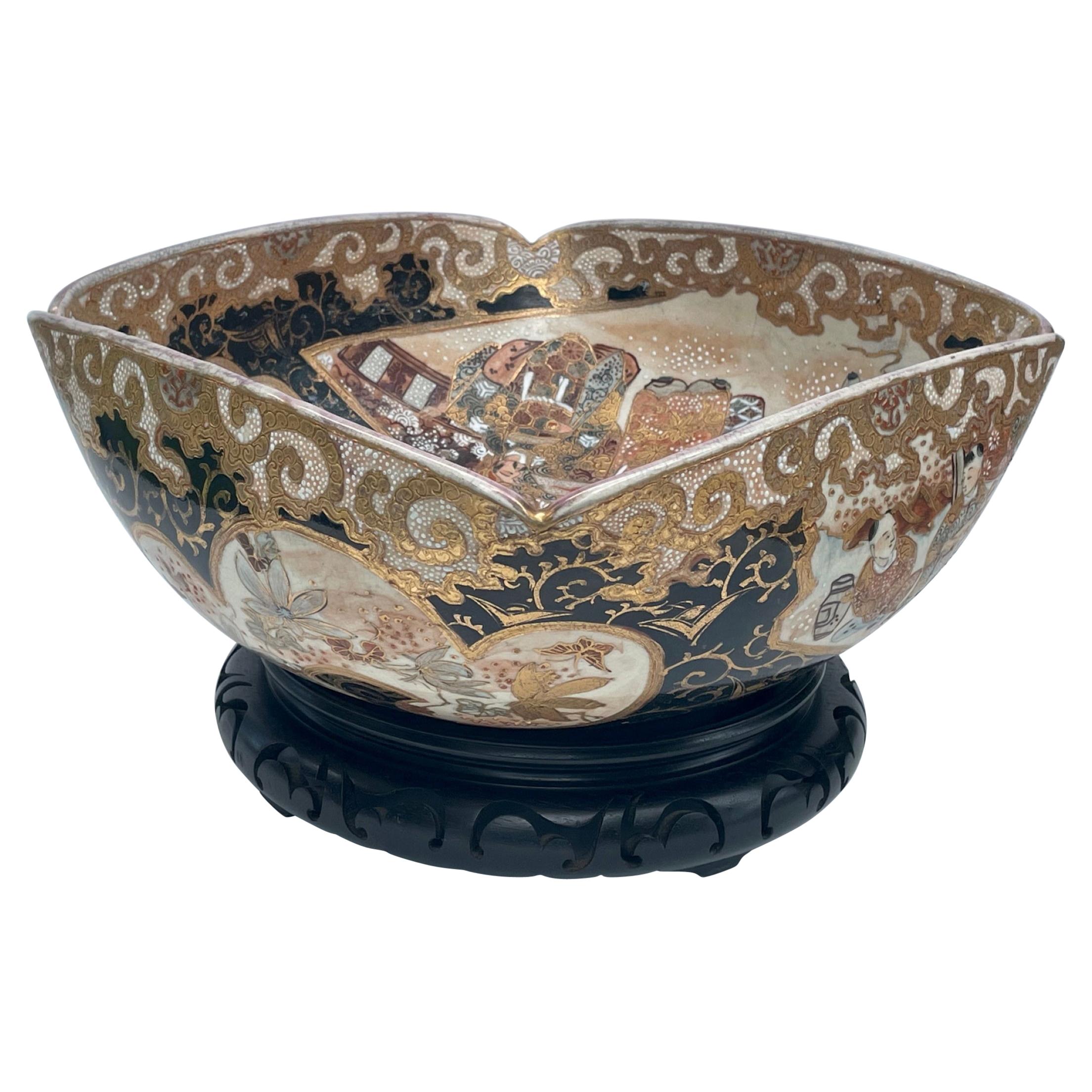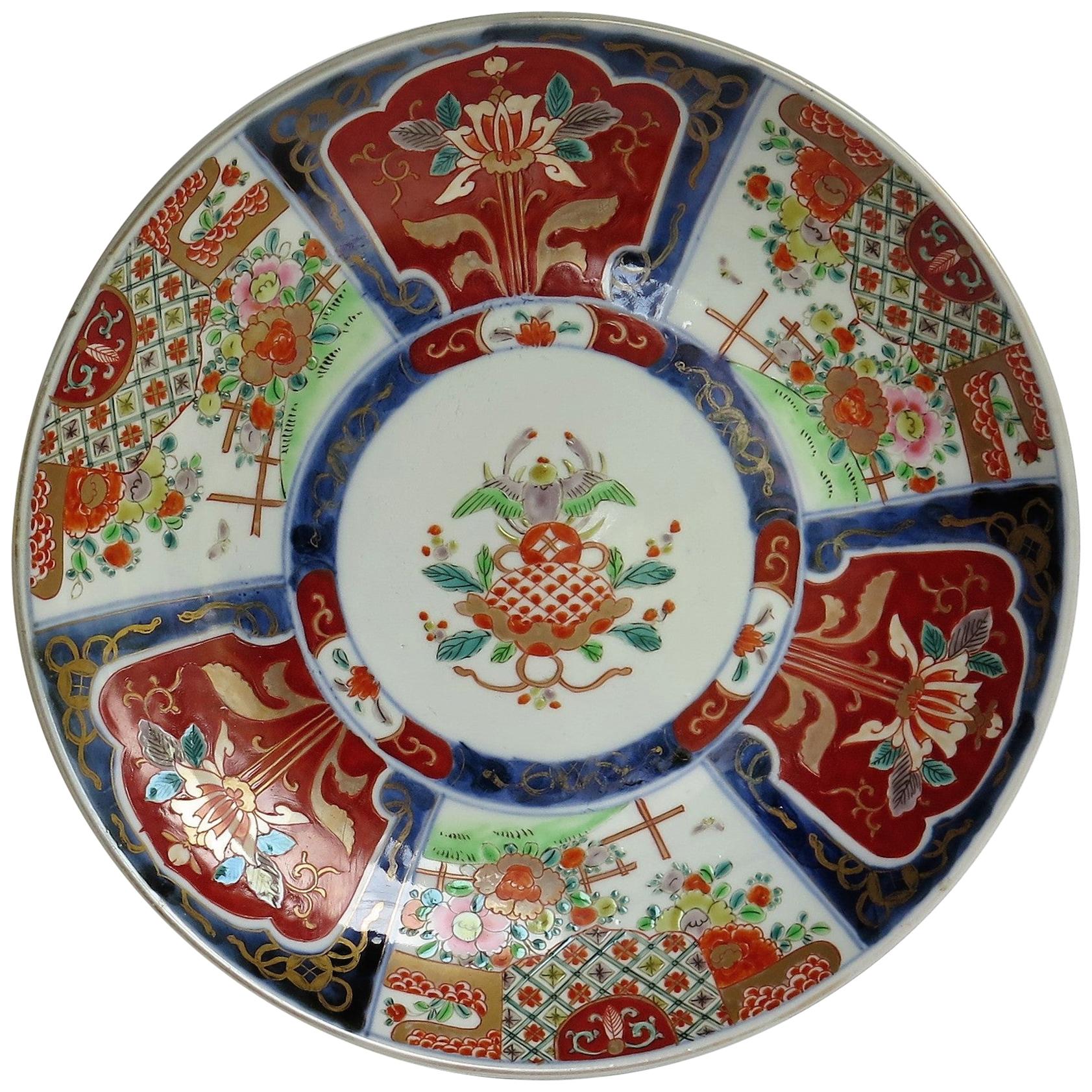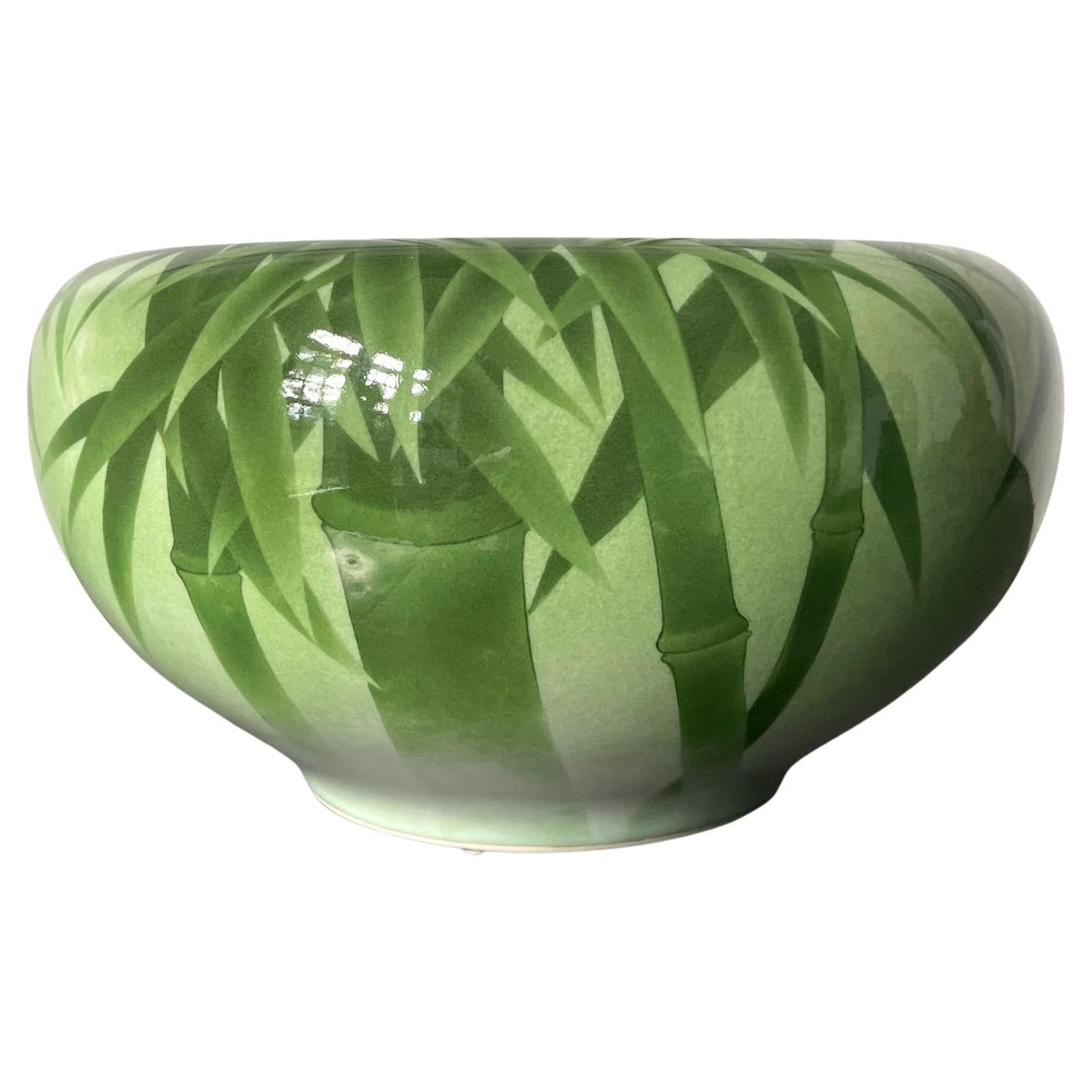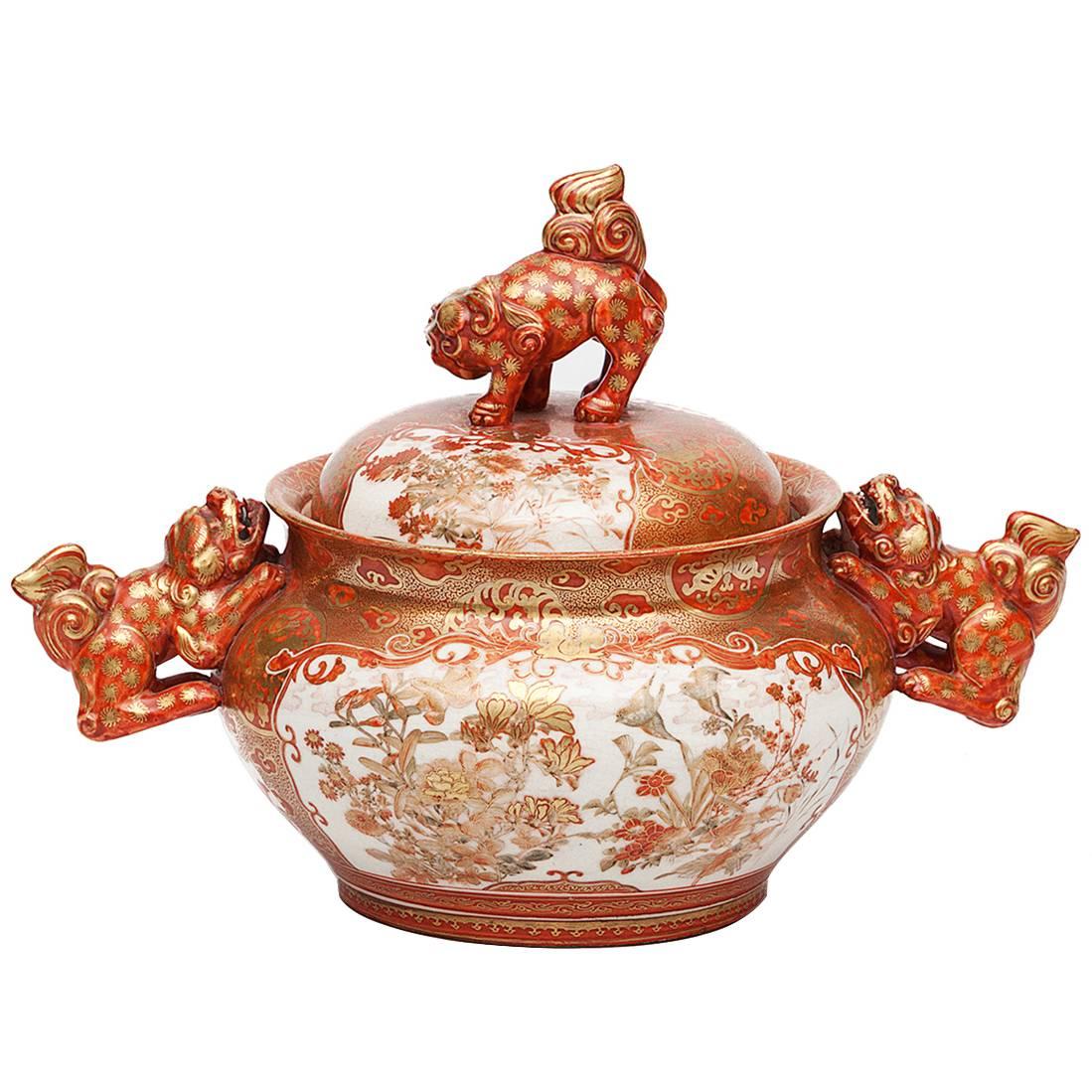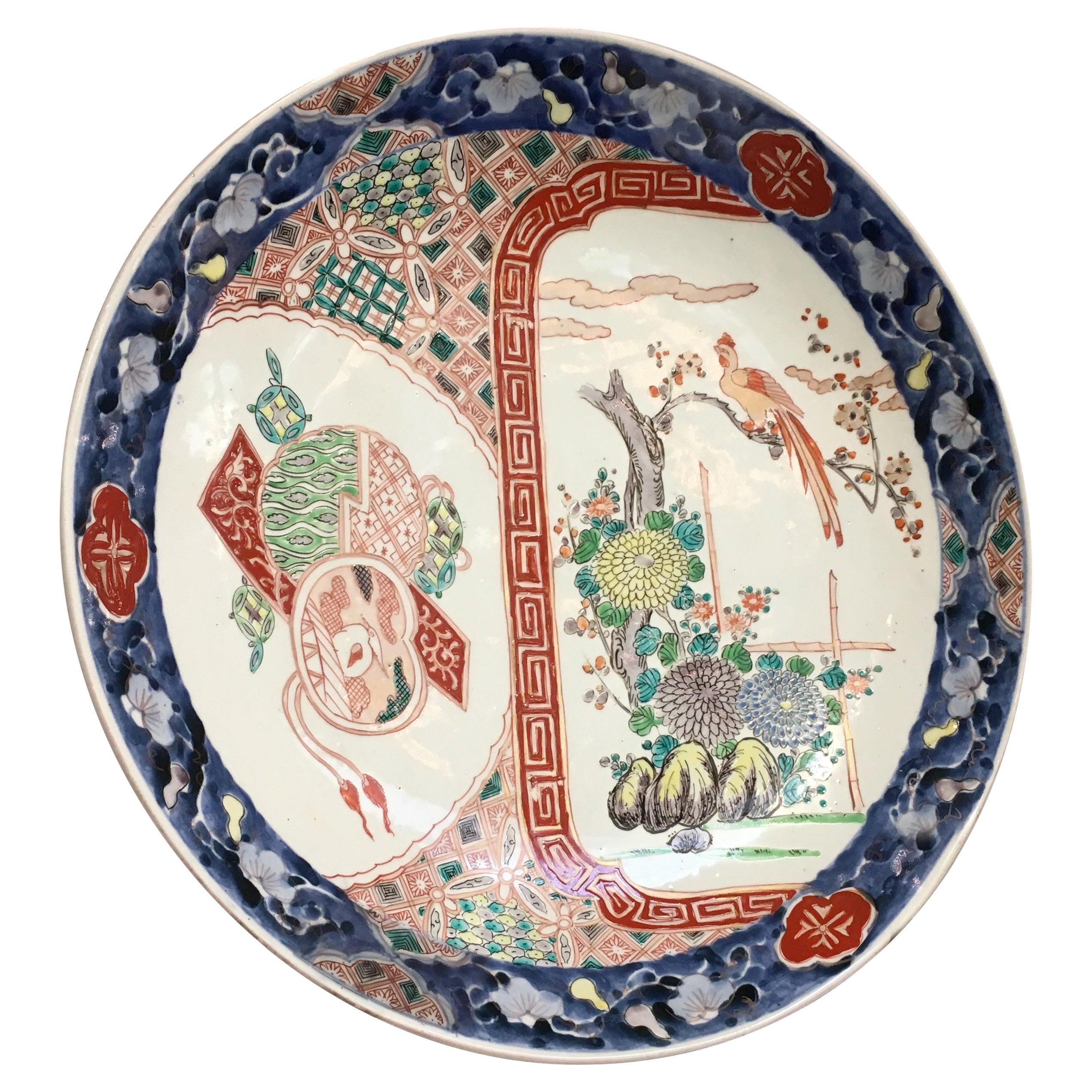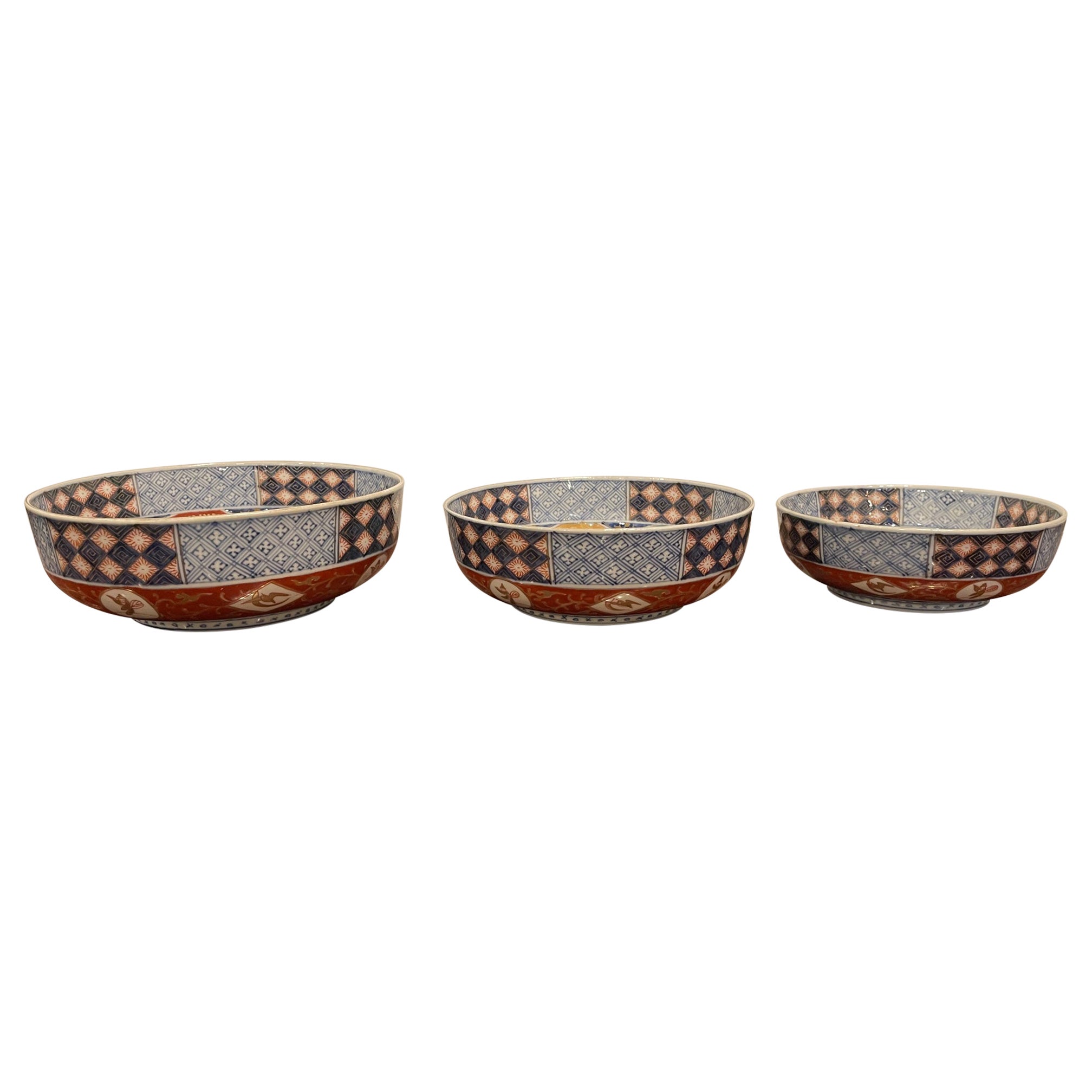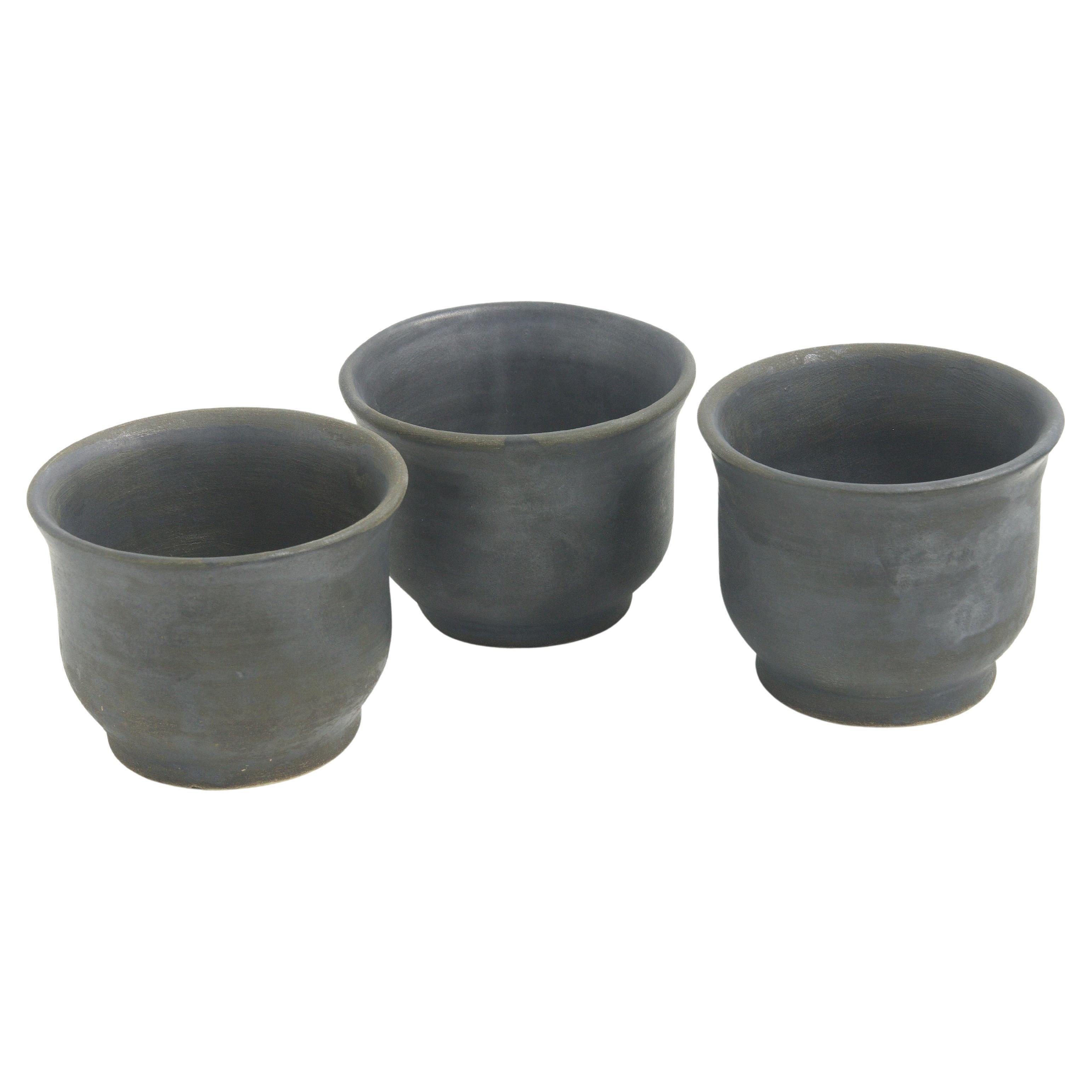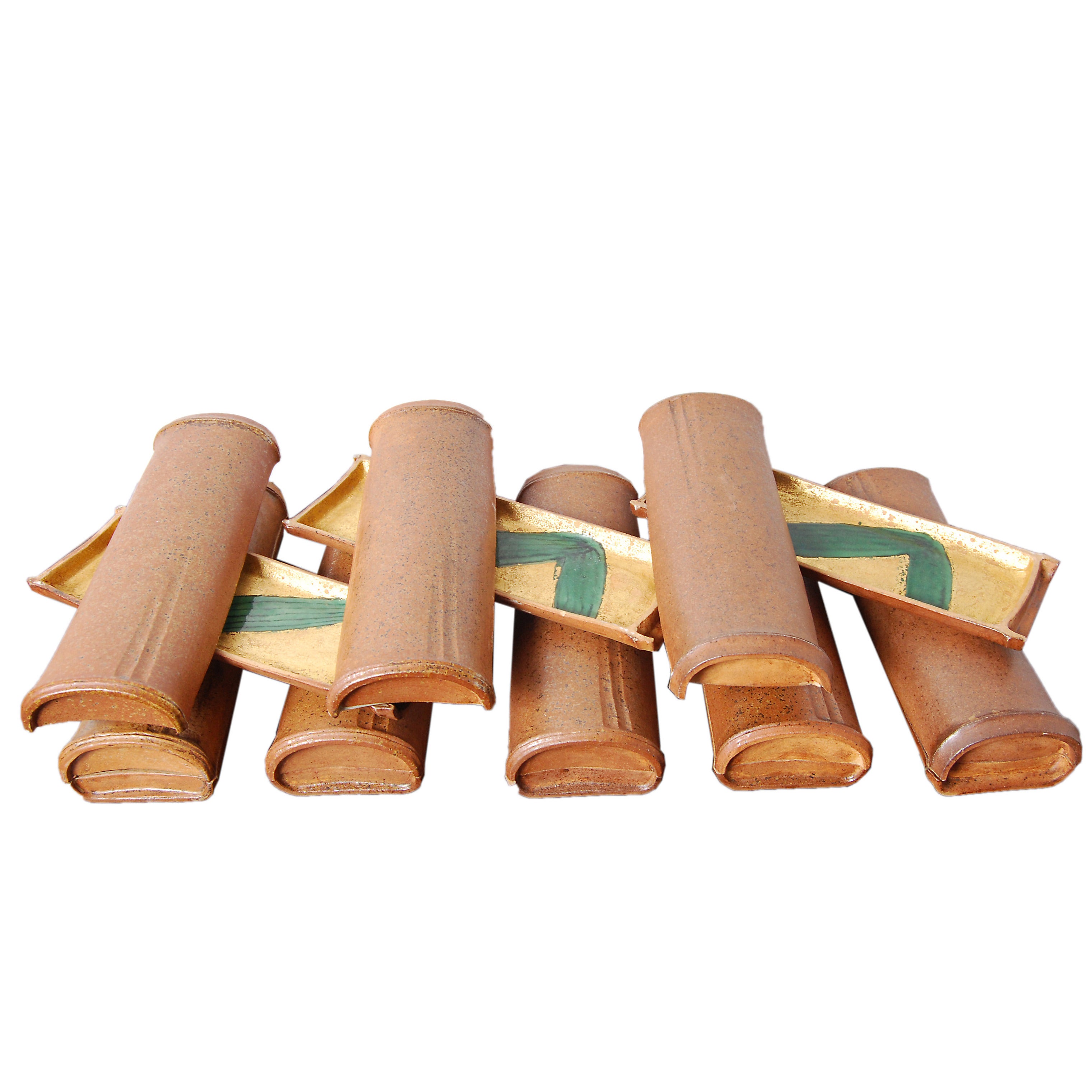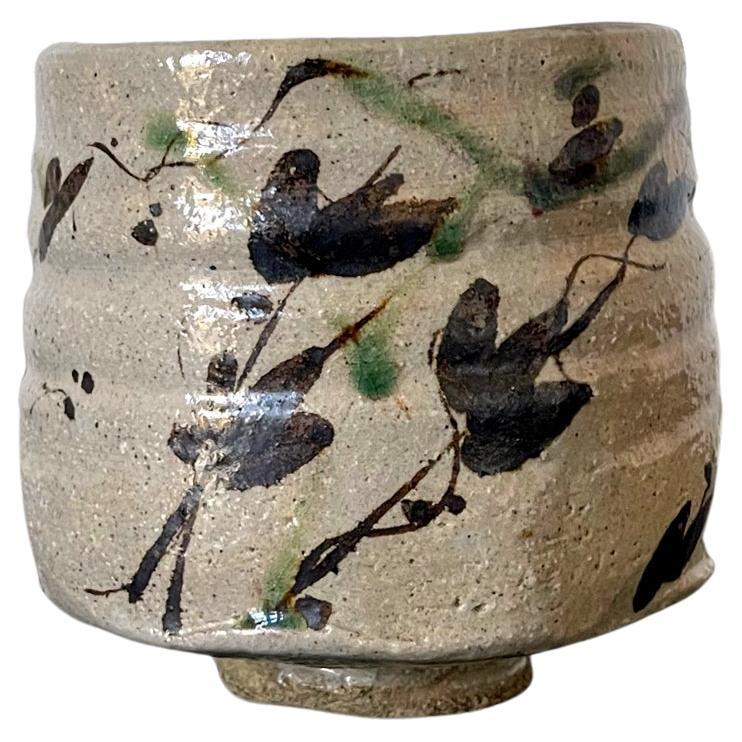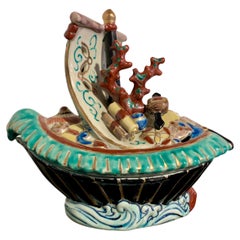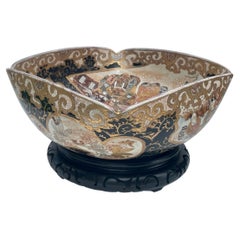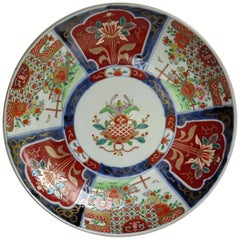
Japanese Meiji Period Kutani Fan Shaped Dishes, Set of Five
View Similar Items
Want more images or videos?
Request additional images or videos from the seller
1 of 11
Japanese Meiji Period Kutani Fan Shaped Dishes, Set of Five
About the Item
- Dimensions:Height: 1.75 in (4.45 cm)Width: 9 in (22.86 cm)Depth: 6.25 in (15.88 cm)
- Sold As:Set of 5
- Style:Meiji (Of the Period)
- Materials and Techniques:
- Place of Origin:
- Period:1900-1909
- Date of Manufacture:circa 1900
- Condition:Wear consistent with age and use.
- Seller Location:Austin, TX
- Reference Number:1stDibs: LU89475316933
About the Seller
5.0
Gold Seller
These expertly vetted sellers are highly rated and consistently exceed customer expectations.
Established in 2001
1stDibs seller since 2010
305 sales on 1stDibs
Typical response time: 1 hour
More From This SellerView All
- Japanese Kutani Treasure Boat 'Takarabune' Censer, Taisho Period, JapanLocated in Austin, TXA wonderful Japanese Kutani porcelain incense burner, koro, in the form of a treasure ship, Takarabune, Taisho Period (1912 - 1926), Japan. The censer boldly modeled as the legendary Takarabune, or Treasure Ship, a mythical ship said to carry the shichifukujin, the Seven Lucky Gods, around the heavens during the first days of the New Year, visiting lucky humans to bring blessings and prosperity. The black bodied, single mast ship sails on the water, its sail full of wind and decorated with the character "takara", meaning treasure. The pierced top of the ship serving as the cover for the censer. It is loaded with magical items and treasure, most prominently, a large coral branch...Category
Vintage 1910s Ceramics
MaterialsPorcelain
- Japanese Kutani Vase with Landscape, Showa Period, 1930's, JapanLocated in Austin, TXA refined and well painted Kutani porcelain vase with a mountainous landscape scene, Showa Era, circa 1930, Japan. The elegant ovoid vase of fine, translucent porcelain...Category
Vintage 1930s Japanese Showa Ceramics
MaterialsPorcelain
- Japanese Imari Charger, Meiji Period, Late 19th CenturyLocated in Austin, TXA nicely decorated Japanese Meiji Period Imari charger, late 19th century, Japan. The porcelain charger featuring a design of a hoho bird, or phoenix, per...Category
Antique Late 19th Century Japanese Meiji Platters and Serveware
MaterialsEnamel
- Japanese Satsuma Incense Burner, Koro, Meiji Period, Late 19th Century, JapanLocated in Austin, TXA fine and elegant Japanese Satsuma tripod incense burner, koro, with pierced metal lid, signed Eizan (?) Meiji Period, late 19th century, Japan. The koro, or censer, features a stoneware body of slightly compressed globular form, supported on three short and squat legs. The wide mouth with a recessed metal rim, and topped by an openwork metal lid topped with overlapping chrysanthemum blossoms of silver repousse. The body of the koro finely painted with fan shaped cartouches. The fans in the foreground with sprays of blossoming chrysanthemum. The fans in the background with intricate geometric brocade designs. The shoulder of the incense burner decorated with cartouches formed as stylized chrysanthemum petals, and intricately decorated with geometric and floral brocade designs. The painting finely done in raised gilt and polychrome enamels, including the highly desirable gosu blue...Category
Antique Late 19th Century Japanese Meiji Ceramics
MaterialsMetal, Silver
- Large Japanese Imari Gilt Charger, the Six Immortal Poets, Meiji Period, JapanLocated in Austin, TXA bold and unusual large 18.5" diameter Japanese gilt ground Imari porcelain charger featuring the Rokkasen, the Six Immortal Poets, Meiji Period, circa 1900, Japan. The impressive charger features a striking image of the Six Immortal Poets, known as the Rakkasen, seated in fenced pavilion within a lush garden setting and surrounded by numerous books and scrolls. Gnarled pine trees and and branches laden with plum blossoms tower overhead, while chrysanthemum and massive peonies bloom among rocky outcrops. The scene is unexpectedly and masterfully executed as if on a byobu, a traditional Japanese six panel folding screen. The screen is opened in a dramatic manner, slightly akimbo, almost jumping off the dish, reminiscent of the "screens within screens" genre that developed during the Edo Period. Despite the folds and changes in perspective, the painting remains harmonious and lyrical, with the fully gilt ground adding a sense of warmth and sumptuousness. The screen is bordered with a geometric bands in the shippo pattern. The shippo pattern features interlocking circles, and symbolizes the Seven Treasures. The shippo pattern on a larger scale serves at the background fo the rest of the charger. The backside of the charger decorated with two bands with underglaze blue designs. The reserve decorated with scattered stylized blossoms in iron red and gilt. The Rakkasen, known in English as the Six Immortal Poets, are a group of 9th century Heian Period waka poets whose works were included and praised by name in an anthology of poetry collected by the courtier, poet, and writer, Ki no Tsurayuki. Waka poems are a strict five line...Category
Antique Early 1900s Japanese Meiji Ceramics
MaterialsPorcelain
- Large Japanese Imari Charger, Edo/Meiji Period, mid 19th century, JapanLocated in Austin, TXA large 18.25" diameter Japanese Imari porcelain charger, Edo to Meiji Period, mid 19th century, Japan. The large charger of near flattened form and decorated in the typical Imari palette of underglaze blue with red, orange and green overglaze enamels and gilt highlights. The design is centered on a roundel with a dense design of scrolling peony blossoms and leaves in underglaze blue. Two large pictorial reserves of Shinto priests...Category
Antique Mid-19th Century Japanese Meiji Ceramics
MaterialsPorcelain
You May Also Like
- Japanese Meiji Period Satsuma Large Square Bowl CenterpieceBy SatsumaLocated in Vero Beach, FLJapanese Meiji Period Satsuma large square bowl Antique early Meiji Period 15" square with scalloped rim Satsuma bowl. Highly unusual and finely painted. ...Category
Antique 19th Century Japanese Meiji Ceramics
MaterialsCeramic
- Japanese Porcelain Charger finely Hand Painted, Meiji Period circa 1880Located in Lincoln, LincolnshireThis is a good quality, hand decorated Japanese porcelain charger, large plate or bowl with an Imari pattern, dating to the late 19th centur...Category
Antique Late 19th Century Japanese Meiji Ceramics
MaterialsPorcelain
- Pair of Meiji Period Satsuma Earthenware VasesLocated in Lymington, HampshireA pair of Meiji period Satsuma earthenware vases, each with applied elephant-mask handles, painted in overglaze pastel enamels and gilt with a continuous central frieze of sages and ...Category
Antique 1880s Japanese Meiji Ceramics
MaterialsEarthenware
- Japanese Ceramic Centerpiece Bowl Makuzu Kozan Meiji PeriodBy Makuzu KozanLocated in Atlanta, GAA beautiful ceramic vessel in the form of Bo, the so-called monk's alms bowl from the studio of Japanese Potter Makuzu Kozan, also known as Miyagawa Kozan (1842–1916), one of the most established and collected ceramist from Meiji Period. Born as Miyagawa Toranosuke, Kozan established his pottery studio in Yokohama circa 1870s and later became one of the appointed artists to the Japanese Imperial household. His work was exhibited in many international fairs that the Meiji government participated at the turn of the century and won many grand prizes. Of a relatively large size, this piece was made as a decorative center piece for display. It was brilliantly decorated with underglaze paint of a green-on-green bamboo motif, using the novel technique developed by Kozan called Fuki-e (the blow painting). As a result, the bamboos appear took on a three-dimensional quality as if appearing in a mist. Known as one of the most creative ceramists, circa 1887, Kozan started experimenting with new chemical colors from the West in the format of his porcelain glaze. New colors allowed him to create underglaze design that appeared bright, smooth and glossy. To create design that is realistic and dimensional, more common in the western paintings, he was inspired by the native Japanese ink painting technique developed around 1900 by Yokoyama Taikan...Category
Antique Early 1900s Japanese Japonisme Ceramics
MaterialsCeramic
- Large Japanese Ko-Kutani Charger, Early 20th CenturyLocated in Melbourne, VictoriaA rare yellow ground Japanese ceramic charger 15.5 inches in diameter. Decorated on a yellow base with a bird, foliage and blossom in shades of yellow, blue, brown and green. S...Category
Early 20th Century Japanese Meiji Ceramics
MaterialsPorcelain
- Japanese Meiji Orange and Gold Porcelain Kutani BowlLocated in New York, NYThis delicately hand-painted Meiji-period Kutani-ware bowl is ornamented with lion-shaped handles on the bowl and lid, and is decorated in orange and gold with panels depicting floral arrangements, surrounded by scrolling borders. On the base is the "Dai Nippon...Category
Antique 1890s Japanese Meiji Porcelain
MaterialsPorcelain
Recently Viewed
View AllMore Ways To Browse
Kutani Meiji
Japanese Meiji Kutani
Storage Boxes Porcelain
Meiji Porcelain Plate
Fan Shaped Box
Japanese Kutani Plate
Antique Kutani Marks
Kutani Plate
Antique Kutani Porcelain Marks
Chinese Export European
Famille Rose Export Porcelain
Chinese Crackle
Chinese Export Porcelain Famille Rose
Japan Wooden Box
Japanese Wooden Box
Antique Chinese Turquoise
Tea Ceremony
Chinese Kangxi
